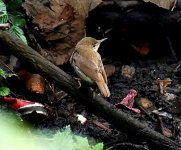ndsutcliffe
SkyBlue136
I should point out that I am re-posting these photos to try and get a few more views on the ID. The reason is that I strongly suspect that this is a Marsh Warbler, however, Reed Warblers are much more common in the area. However I want more certainty as there doesn't appear to be a positive ID of a Marsh Warbler in Portugal (that I can find). So if it's Marsh, it is certainly a rare sighting.
My reasons for suspecting Marsh are :-
Pale eye ring which is similar coloured to the supercilium, whereas I would expect Reed to have a paler supercilium.
Olive tinged back and absence of rufous colour of Reed Warbler particularly on the rump
Off white yellowish underparts, perhaps paler than the buff of a Reed Warbler.
Pale bill with dark ridge, and shorter bill than Reed Warblers ?
Long Primaries
Squarish tail, darker than the body
A more rounded head, rather than flatter shape of Reed warbler.
I am not suggesting these are diagnostic, but at least evidential.
I should also say that I have never seen a Marsh Warbler before, so this is based largely on desk research, not personal experience.
I accept that Reed and Marsh are difficult to separate, but even if you're not sure, your opinion would be appreciated.
Finally to KenM and Harrybongo, who have previously expressed an opinion - I am not questioning your view (indeed I agree with you) but am merely trying to solicit more opinions, because this feels like it would be a rare sighting.
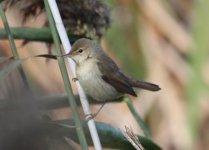
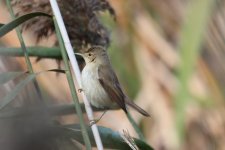
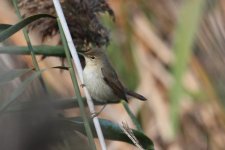
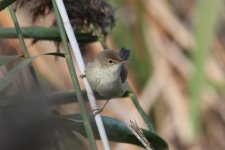
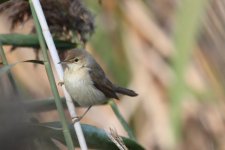
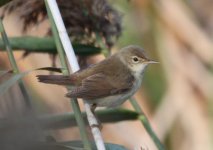
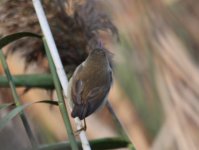
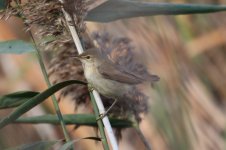
My reasons for suspecting Marsh are :-
Pale eye ring which is similar coloured to the supercilium, whereas I would expect Reed to have a paler supercilium.
Olive tinged back and absence of rufous colour of Reed Warbler particularly on the rump
Off white yellowish underparts, perhaps paler than the buff of a Reed Warbler.
Pale bill with dark ridge, and shorter bill than Reed Warblers ?
Long Primaries
Squarish tail, darker than the body
A more rounded head, rather than flatter shape of Reed warbler.
I am not suggesting these are diagnostic, but at least evidential.
I should also say that I have never seen a Marsh Warbler before, so this is based largely on desk research, not personal experience.
I accept that Reed and Marsh are difficult to separate, but even if you're not sure, your opinion would be appreciated.
Finally to KenM and Harrybongo, who have previously expressed an opinion - I am not questioning your view (indeed I agree with you) but am merely trying to solicit more opinions, because this feels like it would be a rare sighting.













